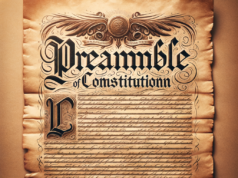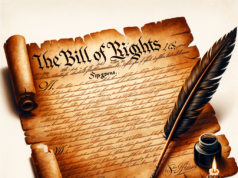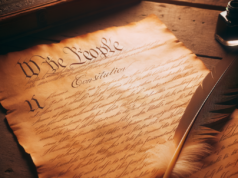
An Overview of the Interstate Commerce Clause
Introduction
The Interstate Commerce Clause, found in Article I, Section 8, Clause 3 of the United States Constitution, is a fundamental provision that has played a significant role in shaping the American economy and legal landscape. This clause grants Congress the authority to regulate commerce among the states, providing a crucial framework for federal oversight of economic activities that cross state boundaries. In this article, we will delve into the history, interpretation, and impact of the Interstate Commerce Clause.
The Historical Context
At the time of the Constitution’s drafting in the late 18th century, interstate commerce was a pressing concern. The Articles of Confederation, the nation’s initial governing document, had proven ineffective in regulating commerce and resolving disputes among states. As a result, the framers of the Constitution sought to empower the federal government with the authority to regulate commerce to ensure economic stability and prevent trade disputes among the states.
The Language of the Clause
The Interstate Commerce Clause is succinct and reads as follows:
“The Congress shall have Power…To regulate Commerce with foreign Nations, and among the several States, and with the Indian Tribes.”
The clause’s brevity leaves room for interpretation, which has led to significant debates and legal developments over the years.
Evolution of Interpretation
1. Early Interpretation: In the early years of the United States, the federal government’s authority to regulate interstate commerce was not widely exercised. The focus was primarily on international trade and ensuring the free flow of goods across state lines.
2. Expansive Interpretation: The interpretation of the Interstate Commerce Clause began to evolve during the 19th century, notably in the case of Gibbons v. Ogden (1824). This landmark Supreme Court decision affirmed that Congress had the power to regulate not only navigation but also any activity that had a substantial impact on interstate commerce.
3. New Deal Era: The Great Depression prompted a significant shift in the interpretation of the clause. Under President Franklin D. Roosevelt’s New Deal programs, the federal government took a more active role in regulating various aspects of the economy, citing the Interstate Commerce Clause as a source of authority. This period saw an expansive interpretation of federal regulatory power.
4. Modern Interpretation: In more recent years, the Supreme Court has struck a balance between federal and state powers. While recognizing the federal government’s authority to regulate commerce among the states, it has also emphasized the importance of respecting state autonomy in certain matters.
Key Legal Cases
Several Supreme Court cases have shaped the interpretation of the Interstate Commerce Clause:
1. Gibbons v. Ogden (1824): This case established that the power to regulate interstate commerce extended beyond navigation and encompassed activities that had a substantial impact on commerce.
2. Wickard v. Filburn (1942): In this case, the Court ruled that Congress could regulate even intrastate economic activities if they had a substantial aggregate effect on interstate commerce.
3. Heart of Atlanta Motel v. United States (1964) and Katzenbach v. McClung (1964): These cases upheld the Civil Rights Act of 1964, which used the Interstate Commerce Clause to prohibit racial discrimination in public accommodations.
4. United States v. Lopez (1995): This case limited the scope of the clause by declaring that Congress could not use it to regulate non-economic, gun-related activities in schools.
Conclusion
The Interstate Commerce Clause is a critical component of the United States Constitution that has evolved over time to address the changing economic and legal landscape. It grants Congress the authority to regulate commerce among the states, providing a framework for federal oversight of economic activities that cross state boundaries. While its interpretation has evolved and been the subject of numerous legal battles, the clause remains a fundamental element of the Constitution, balancing federal and state powers in the realm of commerce.
The Interstate Commerce Clause is a provision that is included in the United States Constitution and is formally known as the Commerce Clause. Contained within Article I, Section 8, the Commerce Clause is intended to give Congress the power to regulate all commerce and trade at the international level, as well as in certain applications at the state level.
When referred to as the Interstate Commerce Clause, it is meant to refer to the specific content that applies to all trade and commerce that occurs between the states of the United States. However, it should be noted that the wording of the Interstate Commerce Clause has been the issue of debate when it comes to the Federal and state powers regulating trade among the states. Understanding the clause as it relates to interstate commerce in trade has been the subject of various Supreme Court cases, which further proves the complex nature of the wording of the clause itself.
For more information on the Interstate Commerce Clause, visitconstitution.laws.com.























